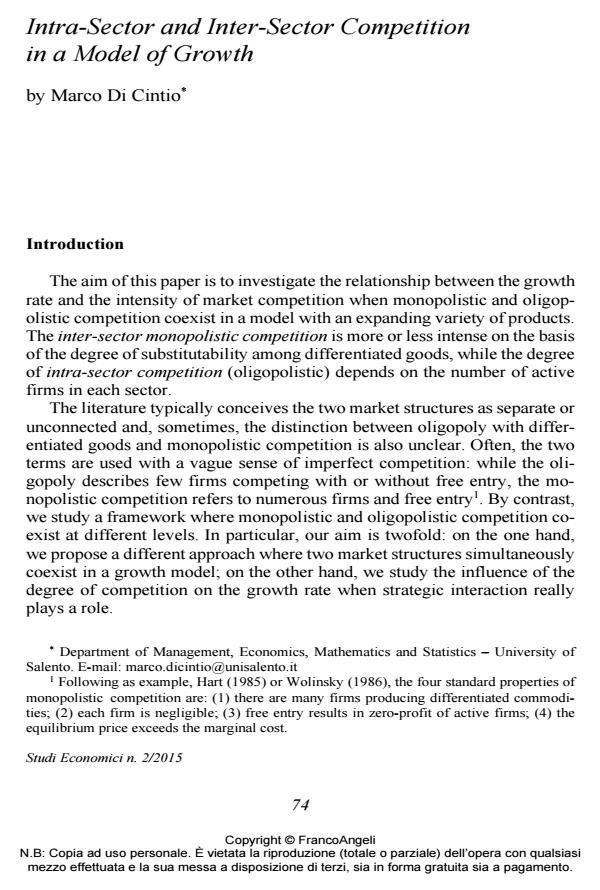Intra-Sector and Inter-Sector Competition in a Model of Growth
Journal title STUDI ECONOMICI
Author/s Marco Di Cintio
Publishing Year 2016 Issue 2015/116
Language English Pages 16 P. 74-89 File size 312 KB
DOI 10.3280/STE2015-116003
DOI is like a bar code for intellectual property: to have more infomation
click here
Below, you can see the article first page
If you want to buy this article in PDF format, you can do it, following the instructions to buy download credits

FrancoAngeli is member of Publishers International Linking Association, Inc (PILA), a not-for-profit association which run the CrossRef service enabling links to and from online scholarly content.
The role of patents is threefold: first, they are important to state the property rights of an invention; second, they are necessary to secure financing for starting a new venture; third, they are fundamental to recoup R&D investments. Noting the imperfections of the patent legal system, the market has two potential levels of competition under different structures: the inter-sector monopolistic competition and the intra-sector Cournot oligopoly. Considering the sectorial market share as the indicator of patent system enforcement, the author finds that growth takes place, if and only if, there are some property rights of private knowledge produced by R&D activities. In turn, the enforcement of patent system translates into a low degree of competition among firms. Its influence on the growth rate goes in a single unambiguous direction. As competition rises, few resources are available for R&D, so the growth rate goes down.
Keywords: Product Differentiation; Endogenous Growth; R&D; Market Structure; Oligopoly; Monopolistic Competition.
Jel codes: E10; L13; L16; O31; O40.
Marco Di Cintio, Intra-Sector and Inter-Sector Competition in a Model of Growth in "STUDI ECONOMICI " 116/2015, pp 74-89, DOI: 10.3280/STE2015-116003